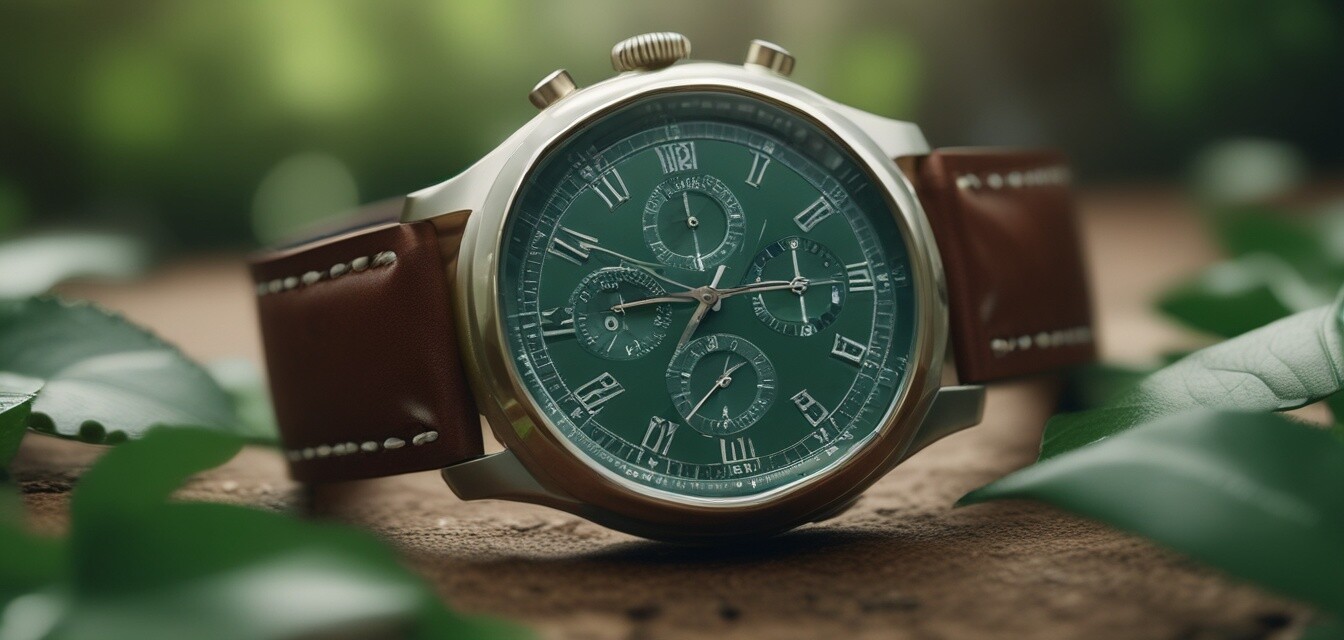
The Best Sustainable Practices in Luxury Watchmaking
Key Takeaways
- Sustainable watchmaking is gaining visibility in the luxury watch industry.
- Brands are adopting eco-friendly practices in sourcing materials and production.
- Transparency and traceability are crucial in luxury watch manufacturing.
- Collaborations with environmental organizations are on the rise.
- Technology innovation is fostering greener production processes.
The luxury watch industry is often perceived as being at odds with sustainable practices due to the nature of its materials and production processes. However, many leading brands are now stepping up to embrace sustainability, not only to meet consumer demand but also to contribute positively to the environment. This article explores the best sustainable practices in luxury watchmaking and highlights notable brands making a difference.
Why sustainability matters in luxury watchmaking
The significance of sustainability in luxury watchmaking cannot be overstated. Here are a few reasons why:
- Environmental impact: The production of timepieces often involves resource-intensive processes that can adversely affect the environment.
- Consumer awareness: Increasingly, consumers prefer brands that demonstrate a commitment to eco-friendliness and sustainability.
- Regulatory compliance: With evolving regulations regarding materials and waste, luxury brands must adapt to avoid penalties.
Leading brands embracing sustainable practices
Here’s a quick overview of some luxury watch brands committing to sustainable business practices:
| Brand | Sustainable Practices | Notable Initiatives |
|---|---|---|
| Breitling | Use of recycled materials in watch components. | Collaboration with environmental organizations like Ocean Conservancy. |
| Cartier | Responsible sourcing of gold through the Responsible Gold Initiative. | Transparency in supply chains and partnerships with conservation efforts. |
| TAG Heuer | Innovative use of eco-friendly materials in watch designs. | Participation in the Swiss Confederation's sustainability policies. |
| Hublot | Incorporation of sustainable materials in luxury collections. | Environmental awareness programs and partnerships with non-profits. |
| Omega | Utilizing sustainable steel and the use of solar energy in production. | Engagement in eco-friendly initiatives highlighted through the "Planet Ocean" series. |
Eco-friendly materials in watchmaking
Many luxury watch brands are now turning to eco-friendly materials to minimize their carbon footprint. Here are some common materials being used:
- Recycled metals: Some brands are opting for recycled gold and steel to minimize resource extraction.
- Biosynthetic materials: These materials, derived from plant-based sources, are being integrated into the watch construction.
- Biodegradable straps: Straps made from natural rubber or other biodegradable materials are gaining popularity.
Innovation in sustainable watchmaking
Watch manufacturers are incorporating various innovative technologies to increase sustainability:
Innovative Sustainable Technologies
- 3D printing: Reduces waste in manufacturing by utilizing only the materials needed for production.
- Solar movements: Allows watches to operate without batteries, reducing electronic waste.
- Traceability technology: Blockchain is being used to ensure responsible sourcing of materials.
The role of consumers in promoting sustainability
Consumers also play a significant role in promoting sustainable practices within the luxury watch industry. Choosing eco-conscious luxury watches can encourage brands to continue pushing for sustainable innovations. Additionally, consumers can stay informed by following recent developments in sustainable practices:
- Engage with brands on social media to learn about their sustainable efforts.
- Read up on latest trends in the luxury watch industry.
- Support initiatives or campaigns that promote sustainability.
Conclusion
The shift towards sustainability in the luxury watch industry illustrates a broader societal movement towards eco-friendliness and corporate responsibility. By adopting sustainable practices, luxury watch brands can not only enhance their appeal to consumers but also contribute positively to the environment. It’s a win-win situation, encouraging a brighter future for the industry and our planet.
Pros
- Environmental benefits through reduced waste and sustainable sourcing.
- Increased consumer loyalty due to ethical practices.
- Innovation in technologies promotes market competitiveness.
Cons
- Higher production costs due to sustainable materials.
- Consumer skepticism regarding the authenticity of claims.
- Transitioning can be challenging for established brands.

